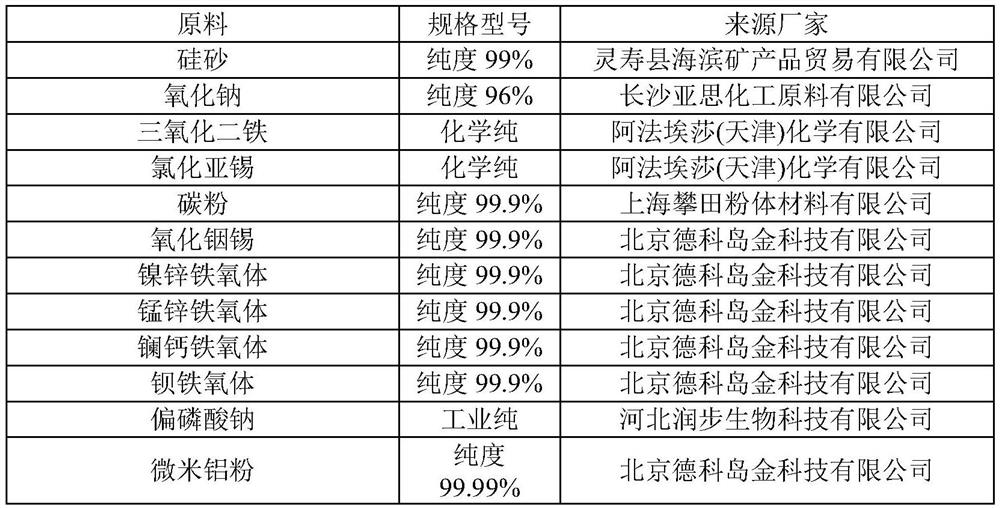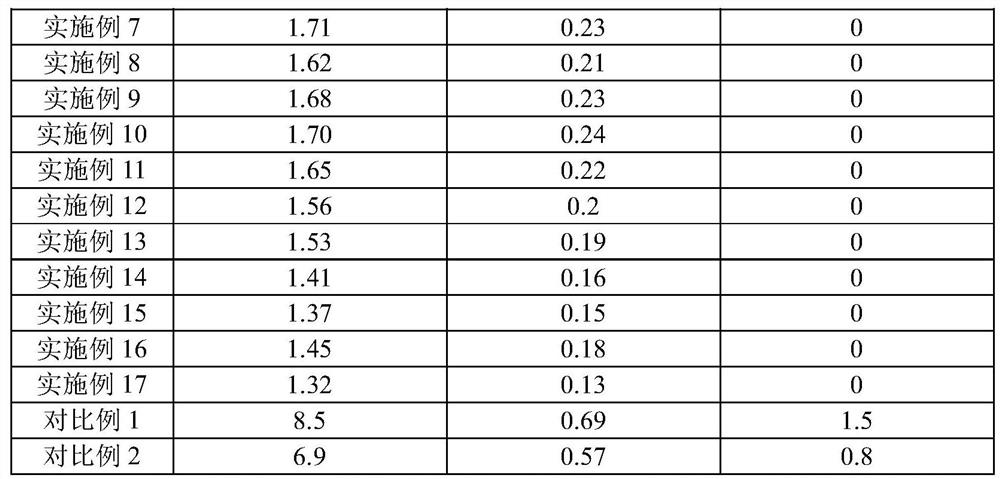High-light-transmittance high-heat-insulation energy-saving float glass and production process thereof
A float glass and raw material technology, applied in glass production, glass cutting devices, glass manufacturing equipment, etc., can solve problems such as float glass prone to defects
- Summary
- Abstract
- Description
- Claims
- Application Information
AI Technical Summary
Problems solved by technology
Method used
Image
Examples
Embodiment 1
[0044] The high light transmission, high heat insulation and energy-saving float glass of this embodiment is made of the following raw materials: 600 kg of silica sand, 150 kg of sodium oxide, 30 kg of magnesium oxide, 160 kg of limestone, 25 kg of feldspar, 0.4 kg of ferric oxide, and a reducing agent 2kg, absorbent 1kg.
[0045] Wherein, the reducing agent is carbon powder, and the absorbing agent is indium tin oxide. The average particle size of the carbon powder is 5nm. The average particle diameter of indium tin oxide is 30 nm.
[0046] The production process of the high light transmittance, high heat insulation and energy saving float glass of this embodiment comprises the following steps:
[0047] S1: Mix silica sand, sodium oxide, magnesium oxide, limestone, feldspar, ferric oxide, reducing agent, and absorbent in a mixing device to prepare raw meal;
[0048] S2: melting the raw materials in step S1 in a melting furnace at a temperature of 1400°C to obtain a melt, a...
Embodiment 2
[0054] The high light transmission, high heat insulation and energy-saving float glass of this embodiment is made of the following raw materials: 650 kg of silica sand, 160 kg of sodium oxide, 35 kg of magnesium oxide, 165 kg of limestone, 35 kg of feldspar, 0.5 kg of ferric oxide, and a reducing agent 5kg, absorbent 1.5kg.
[0055] Wherein, the reducing agent is carbon powder, and the absorbing agent is indium tin oxide. The average particle size of the carbon powder is 5nm. The average particle diameter of indium tin oxide is 30 nm.
[0056] The production process of the high light transmittance, high heat insulation and energy saving float glass of this embodiment comprises the following steps:
[0057] S1: Mix silica sand, sodium oxide, magnesium oxide, limestone, feldspar, ferric oxide, reducing agent, and absorbent in a mixing device to prepare raw meal;
[0058] S2: melting the raw materials in step S1 in a melting furnace at a temperature of 1400°C to obtain a melt,...
Embodiment 3
[0064] The high light transmission, high heat insulation and energy-saving float glass of this embodiment is made of the following raw materials: 700 kg of silica sand, 180 kg of sodium oxide, 40 kg of magnesium oxide, 170 kg of limestone, 50 kg of feldspar, 0.55 kg of ferric oxide, and a reducing agent 8kg, absorbent 2kg.
[0065] Wherein, the reducing agent is carbon powder, and the absorbing agent is indium tin oxide. The average particle size of the carbon powder is 5nm. The average particle diameter of indium tin oxide is 30 nm.
[0066] The production process of the high light transmittance, high heat insulation and energy saving float glass of this embodiment comprises the following steps:
[0067] S1: Mix silica sand, sodium oxide, magnesium oxide, limestone, feldspar, ferric oxide, reducing agent, and absorbent in a mixing device to prepare raw meal;
[0068] S2: melting the raw materials in step S1 in a melting furnace at a temperature of 1400°C to obtain a melt, ...
PUM
| Property | Measurement | Unit |
|---|---|---|
| The average particle size | aaaaa | aaaaa |
| The average particle size | aaaaa | aaaaa |
| The average particle size | aaaaa | aaaaa |
Abstract
Description
Claims
Application Information
 Login to View More
Login to View More - R&D
- Intellectual Property
- Life Sciences
- Materials
- Tech Scout
- Unparalleled Data Quality
- Higher Quality Content
- 60% Fewer Hallucinations
Browse by: Latest US Patents, China's latest patents, Technical Efficacy Thesaurus, Application Domain, Technology Topic, Popular Technical Reports.
© 2025 PatSnap. All rights reserved.Legal|Privacy policy|Modern Slavery Act Transparency Statement|Sitemap|About US| Contact US: help@patsnap.com



